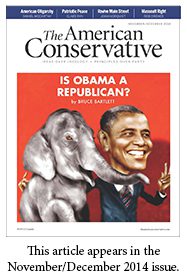Communists of New York

America’s fascination with the anti-communist era after World War II has finally begun to fade. The fall of the Soviet Union and the subsequent brief opening of Soviet government’s most secret archives, the publication of the Venona files along with the work of scholars such as Ronald Radosh, Allen Weinstein, Harvey Klehr, and others put an end to arguments that raged for years. Was Alger Hiss a spy? What about the guilt of the Rosenbergs? Was the Communist Party of the United States an arm of the Soviet state? These and many other issues that divided the nation have been resolved. Those who were suspicious of communist infiltration in the United States, and were vilified for saying so, were right; the left, with few exceptions, was wrong. Today even the Red Diaper generation and angry New Leftists of the 1960s have grown old and no longer seem eager to re-fight lost battles now lost.
Yet a young historian from Australia, Phillip Deery, has decided to take a fresh look at communism and fellow traveling in the late 1940s and early 1950s. His book is built around the cases of six individuals who were caught up in political and legal controversies over communism in New York City, thus his title, Red Apple. The key figures whom Deery describes as “living on the left”—a nice way of saying that they were either communists or dedicated fellow travelers—are a doctor, Edward Barsky; the writer Howard Fast; two college professors from New York University, Lyman Bradley and Edwin Burgum; the lawyer O. John Rogge; and, in something of a reach, the Soviet composer Dmitri Shostakovich.
Deery’s theme is to look at how what he calls the “limits of tolerance and the boundaries of political debate” affected the lives and careers of these individuals—wrecked their lives, in his view. The five chapters examining these figures vary in quality, and the link between them is tenuous at times. The two chapters on Barsky, Bradley, and Burgum are the weakest, dealing as they do with three individuals who were relatively insignificant, politically and otherwise. Barsky, Bradley, and Burgum are tied together by their connection to the Joint Anti-Fascist Refugee Committee, a communist front organization created in 1942. Ostensibly designed to help Spanish Republicans fleeing Spain after the Civil War, the JAFRC was typical of the pro-Communist groups that thrived during the years when the United States and the Soviet fought together in World War II.
Barsky was chairman of the JAFRC while Burgum and Bradley were members. By refusing to testify to various congressional committees and invoking the Fifth Amendment, all three fell afoul of the anti-communist atmosphere of the times and placed their careers in jeopardy. Interestingly, all three seemed content with the choices they made, which was typical of the mindset of the fellow traveler or outright communist. These people believed they were morally right and justified in what they did, thus they saw themselves as both victims and martyrs.
The three remaining chapters are of more interest. Howard Fast was one of the most successful writers of his era, the author some 60 novels, including the hugely popular Citizen Tom Paine and Spartacus. A dedicated American communist, his books were particularly popular behind the Iron Curtain. Spartacus sold over 800,000 copies in East Germany alone.
While Deery sees Barsky, Bradley, and Burgum as victims, Fast comes across as a classic political operator. A communist for years and proud of it, he fell afoul the House Un-American Activities Committee and went to jail for four months in 1950. Deery portrays him as gradually drifting away from his left-wing friends until in 1956, following Nikita Khrushchev’s speech denouncing Stalin’s crimes, Fast abandoned the Communist Party. Deery sees Fast’s defection as “remarkable … for its candor, bravery, its sense of sharp criticism of Soviet leaders.” Deery also believes that as a Jew, Fast was troubled by the anti-Semitism he saw developing in the Soviet Union.
It seems to me that Deery is overly kind about Fast’s motivation for leaving the party. Ever the opportunist, Fast was careful to exploit and nurture his break with the Soviet Union, in the process launching a second career which, if not as successful as his first, was nonetheless highly lucrative. In 1960 his Spartacus novel—with a screenplay by one of the Hollywood Ten, Dalton Trumbo—was turned into a hugely successful motion picture and helped revive his career. 
Deery devotes his shortest chapter to the visit of Shostakovich to the United States in 1949 to take part in a communist-dominated peace conference at the Waldorf Astoria Hotel. The Waldorf Peace Conference was the last gasp of fellow-traveling in America. Shostakovich was ordered to take part by Stalin, as a way of promoting a Soviet-led peace offensive. Deery portrays him as uncomfortable in this role, particularly when he was forced to defend the treatment of dissident intellectuals in the Soviet Union. Shostakovich had to tell lies about the fate of people he knew, some of whom had been murdered while others were sent to the Gulag. There is little that is new in the chapter, unfortunately, and Shostakovich’s role seems unconnected to the others analyzed in the book.
The most interesting figure that Deery deals with is the lawyer O. John Rogge. Deery sees Rogge as the classic America progressive liberal facing the conundrum of how to deal with communism. Rogge drifted in and out of various communist organizations. He was involved in Henry Wallace’s presidential campaign, as a major speaker at the Waldorf Conference, and as the defense attorney for the JAFRC. For a long time Rogge was comfortable on the left, arguing that he “was more afraid of fascism than communism in America.” Despite that he never joined the Communist Party.
What makes him such an intriguing figure for Deery is that Rogge switched sides and became a harsh critic of communism. The primary reason for his drift from fellow traveling was Russia’s condemnation of Tito’s Yugoslavia and the outbreak of the Korean War. These events transformed Rogge politically. But what really made him anathema in left-wing circles was his role in the Rosenberg case. He was David Greenglass’s lawyer and convinced him to implicate his sister, Ethel Rosenberg, and her husband in spying for the Russians. For that, Rogge was denounced by left-wingers as worse than Judas. This doesn’t seem to have bothered Rogge. He continued to be active in legal and political circles for the rest of his life.
Deery portrays Rogge as trying to steer a path between liberalism and communism. All this is interesting, although it has only a limited connection to the other figures analyzed in the book, all of whom were either communists or remained dedicated fellow travelers.
Red Apple is not a monograph with a tight, coherent thesis but rather a collection of disparate essays loosely tied together around certain individuals in the New York area. Deery is sympathetic to the view that American leftists were innocent victims of right-wing political smear campaigns. That many leftists collaborated with communists and some even engaged in espionage is not stressed enough. The communist movement in the United States and its various allies on the left were determined enemies of the American system. One can feel sorry for some of its victims without losing sight of that point.
None of this should detract from certain positive aspects of his book. It is clearly written, based on an exhaustive list of sources, and most impressively shows a nuanced grasp of American political and cultural scene that is impressive for a scholar from Australia.
John P. Rossi is professor emeritus of history at La Salle University in Philadelphia.
Comments